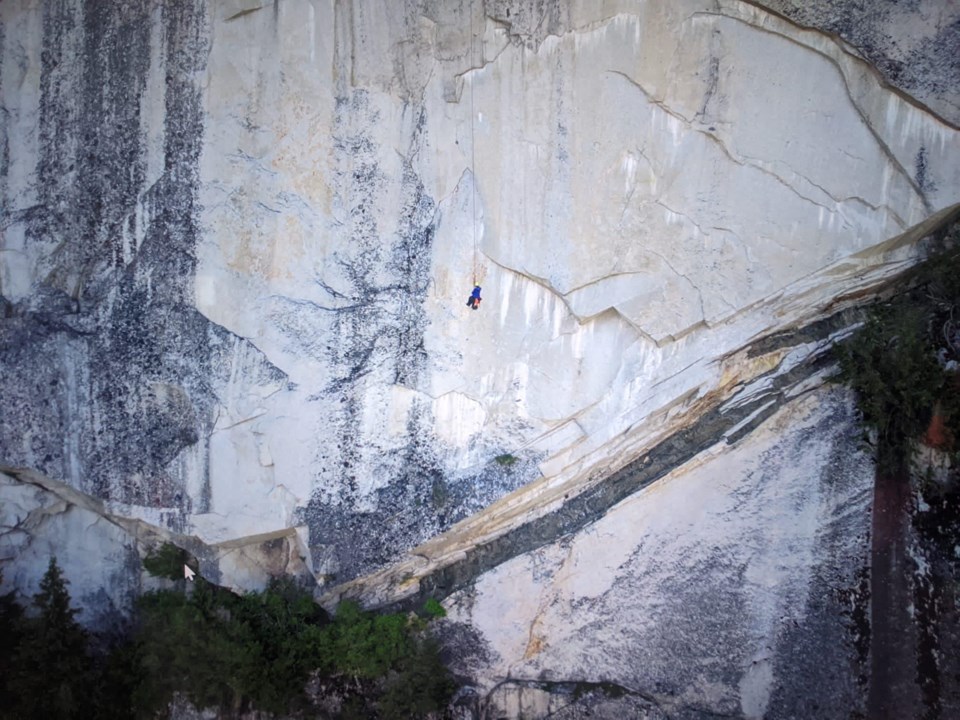Disaster was averted not once but twice this weekend during a search-and-rescue call to the Stawamus Chief.
On Saturday, June 3, Squamish Search and Rescue volunteers were called to the monolith’s Grand Wall after a BASE jumper had trouble with his chute and became stranded on a ledge about 300 metres from the Chief’s face following a “hard landing,” explained rescue manager B.J. Chute.
Initially, crews planned to carry out a long-line rescue, but due to the tight location and attending helicopter’s proximity to the cliffside, the operation could not be completed safely. “We ended up expanding the rescue to our rope-rescue team, and flew our members, along with all of the rope gear, to the top of the Chief and performed what is known as a top-down rope rescue,” relayed Chute.
As its name implies, the rescue involved lowering a team member from the top of the cliff down to the subject, where he was placed in a harness and lowered further down to the ground alongside the SAR volunteer.
Without any major injuries, Chute said the BASE jumper managed to walk off of his own accord.
That wasn’t the operation’s only close call, however.
According to a Facebook post following the rescue, SAR members spotted three flyers take off and land near the crew’s staging area. Chute was quick to say the organization didn’t want to single out any specific windsport, as everyone from hikers to climbers can get in the way of a SAR helicopter, adding to the level of risk for both crews and the general public.
“I don’t think there was any true hazards, but given it’s a weekend and the Chief is quite busy, it's important for people, regardless of the activity they’re undertaking, to ensure they respect the helicopter. That may mean they can’t climb a certain route we are performing a rescue near or BASE jumping from, because any distraction or objects can be a hazard to our volunteers and pilots,” he explained. “We kindly ask any recreationalists that are out, regardless of where they are, if they see a helicopter in the area to give it a significant amount of space so we can perform the rescue we’re trying to do.”
If a helicopter approaches and appears like it’s gearing up for a rescue or landing, Chute advised recreationalists to seek shelter in a treed area “as far away as possible.” This applies to canine recreationalists, too. “It’s important that dogs are leashed and under control,” he added.
“We do understand it can be somewhat exciting for people to watch [a rescue] and people want to take pictures and watch a helicopter fly, but that’s not really the time to be doing that.”
It’s been a fairly busy start to the sunny season for Squamish Search and Rescue, with Saturday’s operation marking the organization’s fourth rescue in the span of a week, Chute said.
“Certainly here in Squamish and throughout the province, when we see warmer weather, people tend to get outside more and obviously the more people we put into an area, the more potential for people to become injured, stranded or lost in the outdoors,” he added. “We encourage people to take five or 10 minutes to research the trail and activity they intend on doing and ensure they are properly prepared for that endeavour.”




